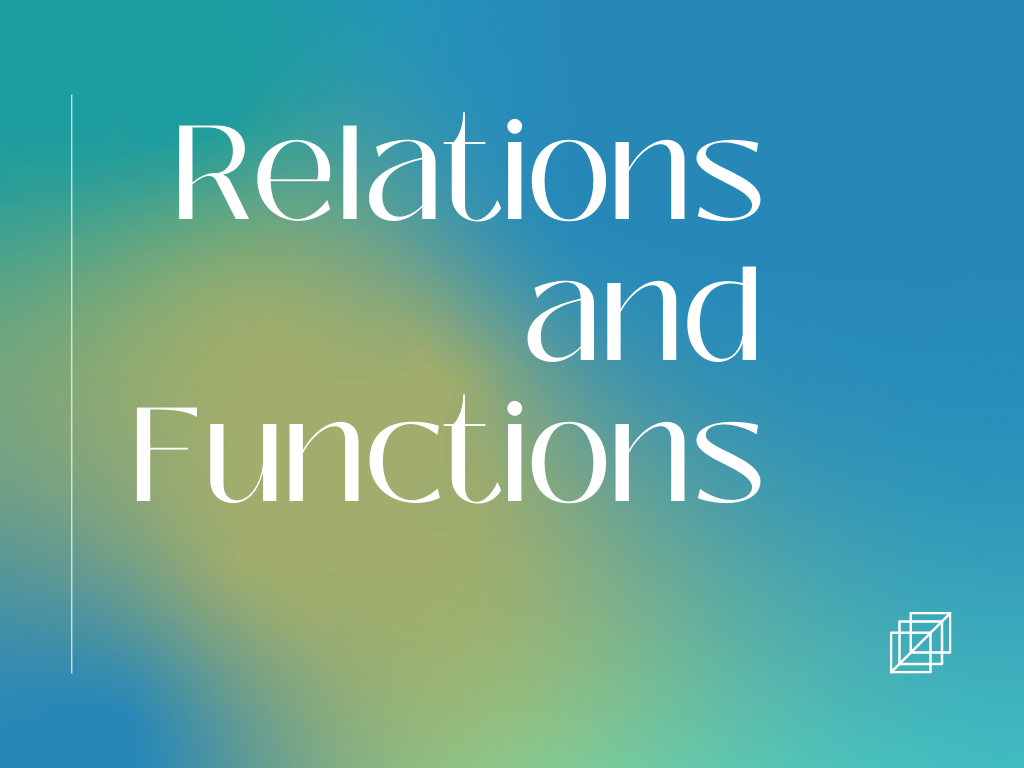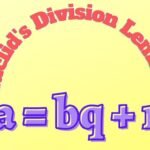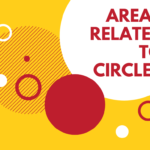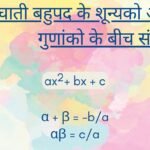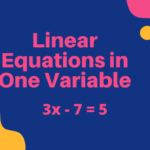Introduction
The meaning of the word Relation in the English language is a connection or link between two objects. In mathematics, the same concept is used between two numbers or quantities. In the previous class, we studied Relations and Functions like cartesian products of sets, Domains, co-domain, ranges, Real functions, Identity functions, Constant functions, Polynomial functions, Rational functions, etc. In Class 12th, we shall study more about Relations and Functions.
Definition of Relation
A relation R is the subset of the cartesian product A×B, where A and B are non-empty sets. The subset of A×B shows the relationship between the elements of A and B. An element of A will relate to an element of B in a particular order. Other elements will also follow that order. Elements of A are the first elements and elements of B are the second elements. The second element is called the Image of the first element.
Let A be the set of natural numbers and B be the set of whole numbers. x is the first element, and y is the second element of the ordered pair (x, y). Then some of the examples of relations from A to B are –
- R = {(x, y): x is the next counting number of y, x ∈ A, y ∈ B}
- R = {(x, y): x is the square of y, x ∈ A, y ∈ B}
- R = {(x, y): x is the square root of y, x ∈ A, y ∈ B}
- R = {(x, y): x is multiple of y, x ∈ A, y ∈ B}
- R = {(x, y): x is the factor of y, x ∈ A, y ∈ B}
In all the above examples, there is a relation between x and y so, we write x R y. We can also write (x, y) ∈ R. All the relations are the subsets of A×B.
Types of Relations
1) Empty Relation – In a set A, if there is a relation R such that the element of A is not related to any element of A then the relation R is called the Empty Relation. It means the subset of A×A is Φ. i.e., R = Φ.
Example – let A be the set of even numbers. Show that the relation R in A given by R = {(x, y): x is the next counting number of y} is the empty relation.
Solution – We know that A is the set of even numbers so, not any number can be the next counting number. Therefore, R is the empty relation, and R = Φ.
2) Universal Relation – In a set A if there is a relation R such that each element of A is related to every element of A then the relation R is called the Universal Relation. It means every subset of A×A is in relation. i.e., R = A×A.
Example – If P is the set of Real numbers. show that the relation R in P given by R = {(a, b): addition of a and b is also a real number} is the universal relation.
Solution – Since P is the set of real numbers so, the addition of any two numbers will be also a real number obviously. Therefore, the relation R is the universal relation, and R = P×P.
Note – Sometimes the empty relation and the universal relation are called Trivial Relations.
3) Reflexive Relation – In a set A, if there is a relation R such that every element of A is related to itself then the relation R is said to be the Reflexive Relation. It means for every subset of A×A, (a, a) ∈ R for every a ∈ A.
Example – Let set B = {1, 3, 5, 7} then show that the relation R in B given by R = {(y, y): y is divisible by y} is the reflexive relation.
Solution – We know that every number is divisible by itself so, every number of set B will also be divisible by itself. Hence, the relation R is the reflexive relation and (y, y) ∈ R for every y ∈ B.
4) Symmetric Relation – In a set A, if there is a relation R such that element a1 is related to element a2 and element a2 is also related to element a1 then the relation R is known as the Symmetric Relation. For the subset of A×A, if (a1, a2) ∈ R implies that (a2, a1) ∈ R, for all a1, a2 ∈ A.
Example – If set X = {1, 2, 3} then check that the relation R in X given by R = {(1, 2), (2, 1), (1, 3), (3, 1), (2, 3), (3, 2)} is the symmetric relation or not.
Solution – Since R = {(1, 2), (2, 1), (1, 3), (3, 1), (2, 3), (3, 2)}
We can see that (1, 2) ∈ R and also (2, 1) ∈ R. It means 1 is related to 2 and 2 is also related to 1. All the other elements are also related to each other in symmetric order. Therefore, relation R is the symmetric relation.
5) Transitive Relation – A relation R in a set A is called the Transitive Relation if element a1 is related to element a2, element a2 is related to element a3, and also element a1 is related to element a3. For the subset of A×A, if (a1, a2) ∈ R and (a2, a3) ∈ R means that (a1, a3) ∈ R, for all a1, a2, a3 ∈ A.
Example – Let set T = {Ram, Shyam, Swami} then check that the relation R in T given by R = {(x, y): x is the brother of y} is the transitive relation or not.
Solution – Here, R = {(x, y): x is the brother of y}
In the given relation, if Ram is the brother of Shyam and Shyam is the brother of Swami then Ram is also the brother of Swami. Hence, the relation R is the transitive relation.
6) Equivalence Relation – In a set A, a relation R is said to be an Equivalence Relation if relation R is reflexive, symmetric, and transitive.
Example – If set E is the set of all rational numbers and R is the relation in E given by R = {(a, b): a + b is a rational number}. Show that R is an equivalence relation.
Solution – We know that sum of two rational numbers is always a rational number. Therefore, Relation R is reflexive because the sum of two same rational numbers (a + a) is also a rational number.
Relation R is symmetric because if a + b is a rational number then b + a will be also a rational number.
For three rational numbers a, b, c,
If a + b is a rational number and b + c is a rational number then a + c will be also a rational number. So, relation R is transitive.
Since relation R is reflexive, symmetric, and transitive, therefore, relation R is an equivalence relation.

